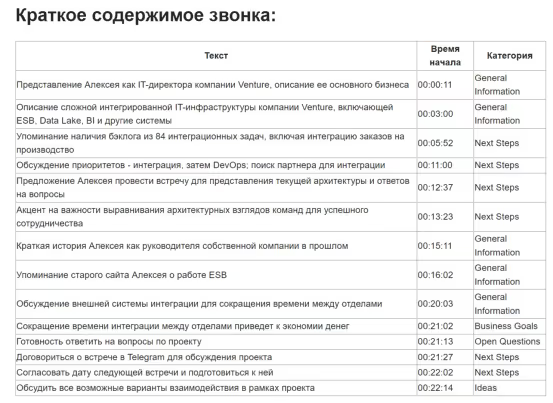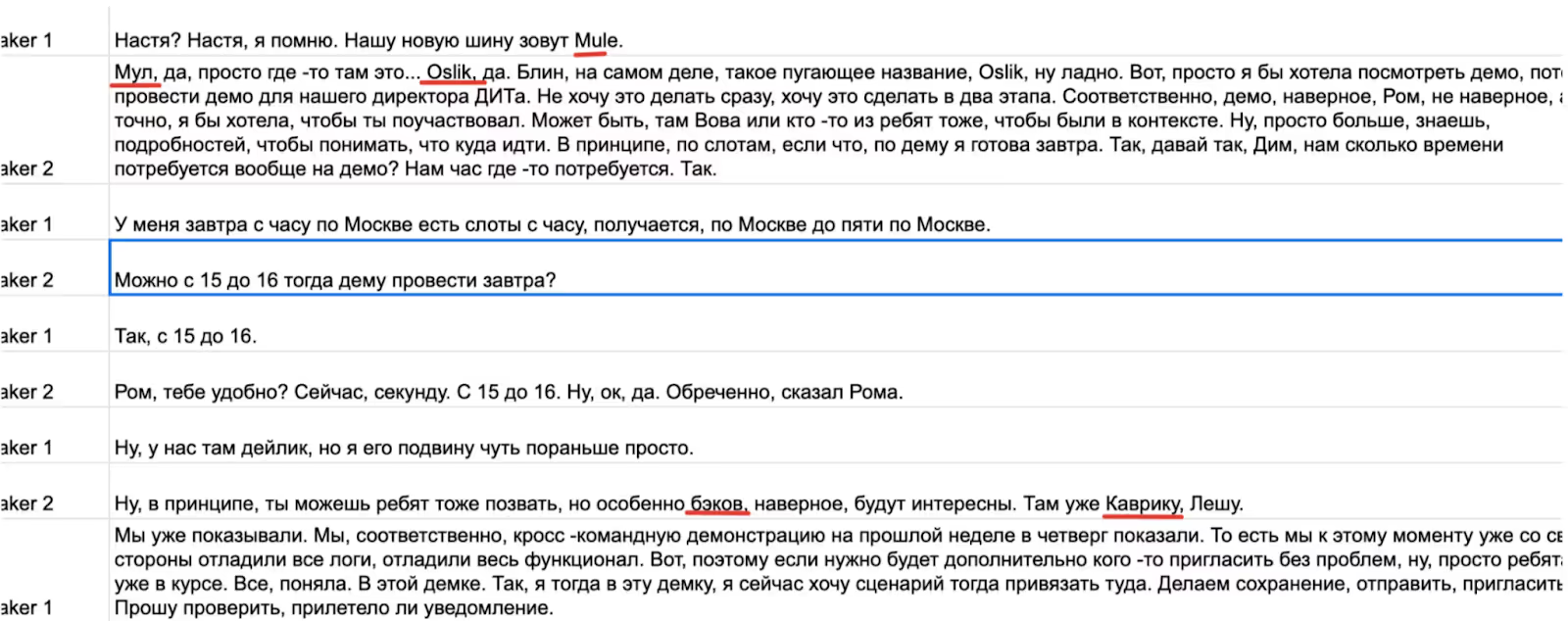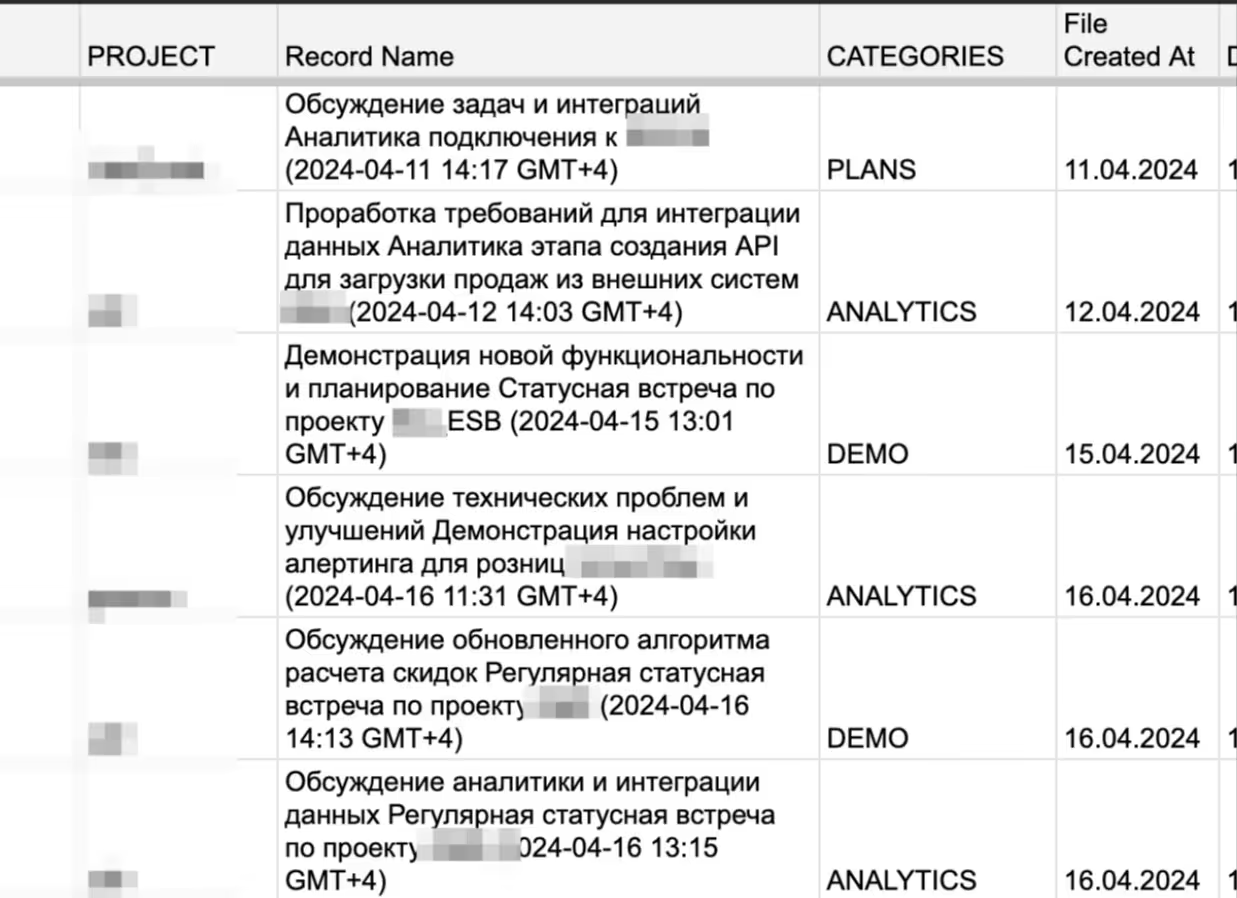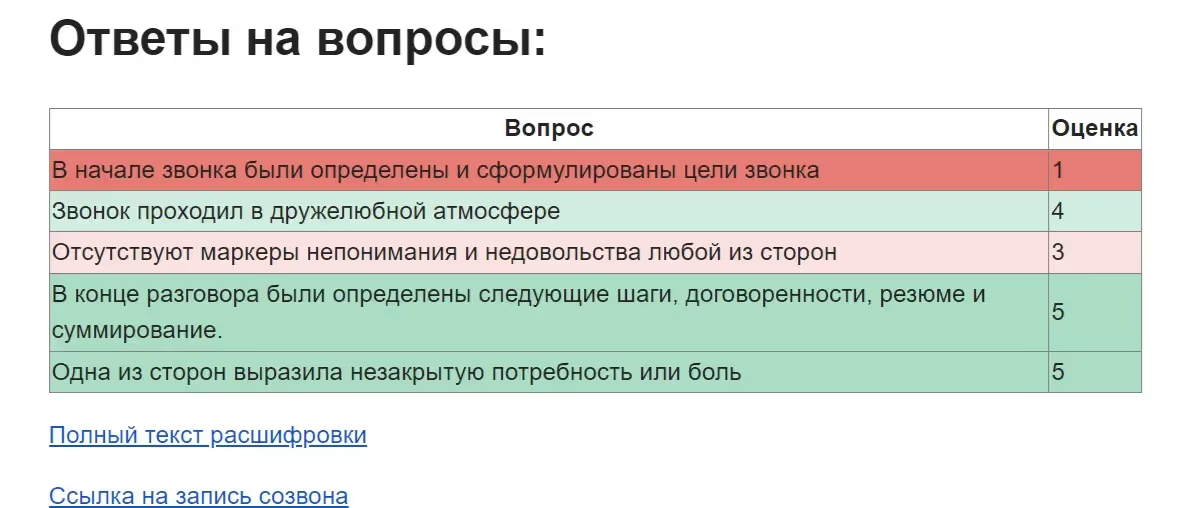Like many others, in recent years we have been closely following the topic of AI and incorporating AI assistants into our processes. They talked about this, for example, in one of the previous articles→. And here's the paradox we've noticed.
Artificial intelligence can be useful in almost any field, from consulting to agriculture. Up to 97% of executives→ they believe that using ChatGPT in their business can also be useful, but... There are not many real implementations. In this article, we will understand why this is happening and how to implement an AI assistant quickly, effectively and safely.
According to a study by Nielsen Norman Group, AI is already being implemented allows→ increase productivity by 13.8% for support agents, 59% for marketing and HR employees, and 126% for programmers.
And this is how McKinsey & Partners consulting firm evaluates→ the impact of AI on the global economy in the coming years:

If there aren't enough people
Relatively recent figures from the labor market: 70% of Russian companies do not have enough employees→! Somewhere we are talking about “hands” for the lowest-skilled job. But more often than not, companies lack engineers, sales managers, developers, project managers... Those whose work should have a multiple impact on the company's revenues.
Don't hope for the best. New employees with the right qualifications are not wheat; they will not grow up in the fields in one season. This means that companies have to restructure their personnel policy in such a way as to recruit and retain staff as efficiently as possible:
- recruit new specialists quickly and reliably;
- quickly teach them about the company's business processes;
- retain the best, including by offering them more interesting tasks and minimizing routine.
But let's imagine what this actually looks like.
Let's say you have Rinat, an experienced purchasing manager. He knows how and likes to “close” the most complex orders: he searches for complex product configurations, checks the supplier's quality, gets discounts, and organizes deliveries. It has never caused production downtime or unnecessary costs.
And so you decide that you need more than one such Rinat, but at least two, preferably three. That's why you're entrusting him to training junior managers in all the techniques and methods that Rinat is fluent in. Now, instead of solving complex procurement problems, your best employee spends 90% of their time nurturing new buyers, listening to their calls with suppliers, and recommending improvements.
A month or two later, Rinat submits a letter of resignation. To the question, “What's the matter?” — he honestly replies that he is no longer interested. He doesn't solve complex problems like “how to get a basket of snowdrops in December for free”, but teaches Juns, most of whom are not even on probation.
This case is very exaggerated. But in fact, similar situations happen all the time. Instead of doing interesting and profitable tasks, the most qualified employees spend more than half of their time on routine, giving feedback, and explaining the company's business processes.
Or let's look at the usual process — calls and online meetings. In fact, they have become the norm for most company departments, from sales to finance, marketing to production.
Traditionally, complex business processes are built around business calls: employees write follow-ups, schedule the next meetings, search the mail and study the follow-ups of past meetings, analyze the quality of negotiations held, and so on and so forth.
As a result, only for the meetings themselves, employees, according to research→ Atlassian, on average, spends about 31 hours a month. This is an average. For some units, the figure can reach up to 80-100 hours per month per person.
When most of the work is calls, it will take a really long time and effort to process them. All these routine and time-consuming things can be automated by assigning them to a virtual assistant, such as an AI that can transcribe meetings and prepare minutes.
The GPT-4 language model, which easily copes with such tasks, was released in spring 2023. But for some reason, few people still use AI assistants based on it.
The gap between “it should be” and “it just happened”
To understand this, let's continue the topic of transcribing calls. According to the most rude estimates, there are more than a hundred products on the market that can translate speech into text and prepare short extracts based on this text. TL; DV, Fireflies, Rewatch, Transcriptor — all these and many other tools easily decrypt calls in major languages (including Russian).
And if a sales executive decides to implement any of these tools, he can easily find a ready-made solution. At first glance, it's simple: I bought the product, installed it and started using it. But that was not the case.
As a rule, such ready-made solutions live separately from the company's infrastructure. This means that:
- call recordings will have to be manually uploaded to the decryptor or added to all meetings with a special bot;
- records will be processed on an external server;
- all information from the discussion will be stored on this service and, most likely, the language model will use this information to respond to other people's requests;
- the decryption and the short protocol must be taken separately from the decrypter and saved by hand in your systems.
Will it eventually be possible to increase employee efficiency and get rid of routine? It is possible, but it is not true. Will it be possible to save confidential data about your products, projects and customers? Hardly likely.

There are also problems with adapting the product to the specific needs of the company — for example, a decryptor does not understand employees' specific IT slang. Thus, a banal “apishka” can become either a “muffin” or a “pawn”. It turns out that someone will have to reread the transcripts and edit them.
Using the tool is inconvenient. It is not safe to trust him with confidential information. It is impossible to use the results of the work.
This means that you shouldn't even spend time and money on its implementation — this is the conclusion reached by the sales manager, burnt by all these inconveniences and risks.
But is that not the case?
Even the perfect tool needs to be... implemented correctly
Let's see what “proper implementation” means.
It's autumn, it's raining outside the window, the mood is not so good. You say “Alice, turn on the kettle, I'll make oolong tea” — and you don't need to check that the kettle will turn off exactly at 80 degrees. You ask her to play music for a sad evening, and she finds the perfect styles and compositions for you. You're asking when it'll stop raining—she doesn't specify what time zone to use for the time. Alice is properly embedded in your life — she knows about your preferences and processes.
It should be the same with AI. You (and your employees) don't have to double-check his work every time and do a million repetitive actions. Let's take the same process of decrypting a call and see what proper implementation consists of AI for working with calls→.
Warning: All the screenshots and gifs we use in this article are from real interfaces that KT.team works with. This is what an embedded AI tool looks like that is easy to work with and from which it is easy to obtain any data.
Your processes don't have to be broken: AI understands and takes them into account
What does the process of working with a call in your company consist of?
- An employee makes a call in the calendar.
- The meeting takes place at Meet or Telemost
- After the meeting, all participants should receive a protocol. But employees must receive the full version of the transcript, and only a short report can be sent to external users.
- Corporate emails may not include specific numbers or customer names. Transcripts should be clearly linked to a specific client or project, and the format of letters with protocols must comply with the company's internal standards.
- After the meeting, both the transcript and the protocol should be included in Bitrix in the project charter. Or in amoCRM, to the customer card — it depends on what type of call it was.
Ready-made out-of-the-box solutions usually do not take these features into account. They are only good at deciphering and drafting protocols. Everything else will require a person, which means that the call processing time will not decrease, as will the amount of routine.
If the AI assistant is properly implemented, it will take care of everything that can be described at the level of industries and integrations.
He will not just transcribe the call verbatim, but will draw up a protocol according to the standards adopted by your company and send it.

He “goes” to the list of employees and determine whether there were outside users at the meeting.
He will go through the integration and, after checking the list of participants and the topic, will save the conversation recording and transcript it to the right client's card.
What does it take for an AI assistant to do all this? Analyze the process “around the call” and prescribe all the requirements, restrictions and procedures. And, of course, upload all these aspects to the implementation team.
Are you sure that confidential information is not being leaked
In the spring of 2023, Samsung discovered→ ChatGPT responded with snippets of its code: it turned out that programmers sent their code to the bot with a request to optimize it. The company has completely banned employees from using third-party services in their work.
I don't want to be in Samsung's shoes and find your scripts, NDA project details, or customer financial information publicly available. And using a cloud-based AI tool, this is hard to avoid.
The option “install AI on your servers and isolate it from the outside world” works, but it's not the only one. For example, you can integrate a data anonymization service between your systems and the decryptor or set conditions and rules for encrypting confidential information.
When implemented, the integrator will offer you solutions that comply with your security protocols. The boxed product is the same for everyone.
AI speaks the same language as you
We already wrote above about the pudding. Each field has its own terms and slang. And the language model that's under the hood of a transcriber learns from all the information available on the Internet. She doesn't understand the context, so she chooses randomly from a variety of similar-sounding words.

What is properly implemented AI for decryption? This is a tool that understands exactly your terms and slang. To achieve this, AI needs to be trained using your data — existing texts, transcripts, protocols. You need to look through the first few dozen transcripts and give the AI feedback: yes, you were right in choosing the word, but then you were mistaken, in fact, that term was mentioned.
At the first stages, you will have to invest time and effort. For example, when we integrated an AI assistant to work with calls into KT.team, we “fed” him hundreds of recorded calls and transcripts. As a result, AI confidently recognizes slang even in an “unconventional” form.

The tool does not require long-term training for employees
As an integrator, we have seen this situation many times: the company has implemented a complex, very sophisticated tool that can improve its performance in individual processes several times, but... In reality, employees use only a tenth of the functions well. The rest requires a lot of onboarding or training, which means no one uses it.

It's the same story with AI tools. If you need to take 10 additional steps when organizing a meeting and 10 more after it to get a simple transcript, rest assured that they will be ignored or sabotaged.
Of course, you can set a “use it or leave” condition for employees — but that's not our method, right?
However, the proper implementation of an AI tool means that it can be used intuitively.
You're already making appointments on your calendar, using conference calling programs, and recording calls? This is enough for AI to be able to decrypt it.
Do you already use any of the online spreadsheets? This is enough for AI to be able to organize calls and categorize them.

Do you already have a regular or corporate messenger? This is enough to integrate an AI bot to work with call information. Moreover, when we talk about a bot, we don't mean a complicated menu with ten levels of embedded logic, but the ability to communicate with data like a knowledgeable colleague. Ask him questions in human language and get clear answers. For example, like this:
.gif)
What is important: you should not be limited in choosing tools “under the hood”. The language model, the method of making calls, the interface for storing information about calls, the chat interface — all this should be chosen by you. If an integrator claims that this is the configuration that the IT tool dictates and there are no options, it seems easier to change the integrator.
At the end of each call, you get exactly the information you need
A set of promts is already embedded in the boxed AI product: how to decrypt calls, how to draw up a short protocol, what is considered important, and how to formulate the subject line of the call. The problem is that these are universal promts. They are designed for all users — which means no one in particular.
But you have your own processes and needs.
For example, you want the call topic to include the project name and the main agreement. So that all points in the meeting minutes start with a verb. You need to have every sales call analyzed for compliance with the script.
To achieve this, it is necessary to complete the necessary promts together with the integrator team at the implementation stage. You form what you want to get, and the team finalizes the wording of the proposals.
You can make a quick summary of the call so that it always contains only the most important things: decisions, plans, ideas. Separately, you can create requests to assess what happened on the call — for example, how friendly the overall mood of the conversation was.

So what's next?
Once implemented, the AI Assistant will help you and your team.
But processes are changing and getting better. Does this mean that after each change, the assistant becomes less useful: it stops giving you answers to the questions you need, writes the wrong protocols, or doesn't know how to exclude users from the mailing list?
No The correct implementation of an AI assistant means that it is easy to make any changes. This is not a black closed box with which you can only do two things — endure it or tear it down, but a flexible design.
When implementing, the integrator must show you:
- where are the promts for all the actions provided for by the AI Assistant, and how they can be changed;
- how to add new call categories and scoring rules.
Briefly about the main thing
So, a properly implemented AI tool should not dictate changes in processes to you and should not be rigid. Talk to an integrator about:
- what safety rules must be followed — the integrator will offer technical implementation solutions;
- where should information about meetings come from and where (on what basis) the transcript should go;
- what do you want to know about the call in addition to its content;
- how you plan to use call information in the future;
- what corporate tools you're already using and what information should be emerging from and included in these tools (and on what basis);
- which interfaces for working with summaries, protocols and call statistics are more convenient for you.








